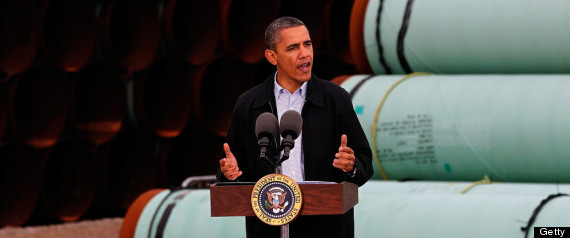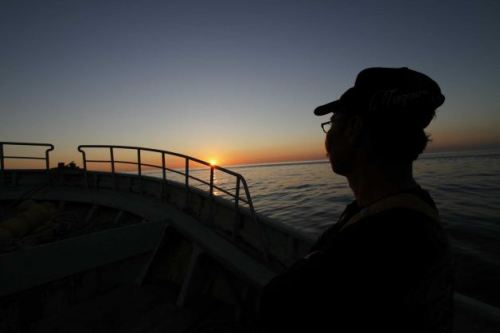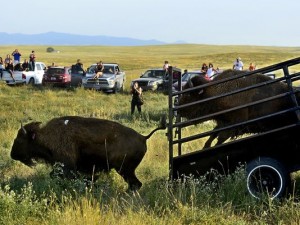
Benjamin Romano 8/29/13
The cup that holds your morning coffee is a seemingly simple item to be used and discarded. It probably hasn’t changed much over the years. No big deal, except that Americans go through 137 billion disposable beverage cups each, generating a tremendous amount of waste.
That looks like a huge opportunity toMicroGREEN Polymers, a company with a distinctly Pacific Northwest mix of technology, innovators, customers, and investors, now including two American Indian groups, which represent a new source of venture capital and private equity nationally.
The Arlington, WA-based manufacturer is raising $10 million from investors including theConfederated Tribes of the Grand Ronde. The financing is part of a $20 million round, which began early this year with a $5 million investment from the Stillaguamish Tribe, and is expected to close with another $5 million investment, also from American Indian tribes, says MicroGREEN president and CEO Tom Malone. The company plans to use the cash to expand its line of recycled and recyclable hot and cold beverage cups, and to increase production capacity.
The Stillaguamish and Grand Ronde are part of a growing number of American Indian tribes putting their newfound casino wealth to work in more sophisticated ways, including through direct investment in local companies focused on long-term sustainability, among other values that match their own.
MicroGREEN aims to make up to 500 million InCycle cups a year—still just a drop in the bucket of the disposable cup market, which is expected to grow to 159 billion units by 2016, according to the company, which cites research from The Freedonia Group. That would generate around $25 million in sales, and the company forecasts it will turn profitable by mid-2014, “largely because this round of financing enables us to put in place the final production equipment to hit that full capacity,” Malone says.
It plans to nearly double its staff to 100 people by the end of the first quarter of 2014, with a third shift to be added “almost immediately,” he says.
UW Technology
MicroGREEN’s manufacturing process—developed by Greg Branch and Krishna Nadella as graduate students in the University of Washington mechanical engineering department more than a decade ago—injects food-grade carbon dioxide into recycled polyethylene terephthalate (PET) plastic inside a pressure vessel. The polymer is then heated, allowing billions of tiny bubbles to form in the core of the plastic, expanding it into a material that can be made into insulated beverage cups marketed as InCycle.
The cups have 30 percent the density of solid plastic cups, Malone says, reducing the cost and global-warming impact of the end product. Moreover, the cup is easily recyclable at the end of its life—adhering to “cradle to cradle” design principles—unlike plastic-lined paper cups found in many coffee shops, which are difficult to recycle in most conventional municipal systems.
“All we’re doing is allowing recycled plastic to take another trip through the economy,” Malone says.
And since the MicroGREEN process gives the cups great insulation properties, there’s no need to grab a second cup or sleeve to protect hands from the hot drink inside.
“We can compete against all the legacy producers in a way that enables us to give the consumer what they’re looking for and for us to make a profit,” Malone says.
The company names customers including Redhook Brewery and Alaska Airlines, which will begin using InCycle cups for beverage service on flights beginning Oct. 1. Other airline orders are also in the works, Malone says.
The Alaska deal has helped expose the company to one of the world’s biggest users of disposable cups: Starbucks, whose coffee is served by Alaska and, according to Malone, has approved the InCycle cup to hold its brew. (Starbucks, which uses 4 billion cups a year globally, has a goal of making 100 percent of them reusable or recyclable by 2015. It’s actually a quite complex problem, as explained in this post updating the coffee giant’s progress.)
With this latest investment, MicroGREEN has raised $42 million. Earlier investors include WRF Capital, Northwest Energy Angels, and Waste Management, the garbage giant.
Tribal Investment
The story of MicroGREEN’s investment from American Indian tribes starts with proximity. After receiving an order from the Stillaguamish-owned Angel of the Winds in Arlington, MicroGREEN invited tribal representatives to visit its factory.
Koran Andrews, CEO of the Stillaguamish Tribal Enterprise Corporation, took a tour last year and recognized an investment opportunity in keeping with her organization’s goals of economic diversification and long-term sustainability. Bill Lomax, president of the Native American Finance Officers Association (NAFOA), says of the Stillaguamish: “For one of the smaller tribes in the country that maybe doesn’t get out into the national media as much, they’re probably one of the savviest.”
Malone says Andrews opened his eyes to the opportunity presented by the growing economic might of American Indian tribes. And it was the Stillaguamish who introduced MicroGREEN to the Confederated Tribes of the Grand Ronde at a conference in Seattle earlier this year, says Titu Asghar, director of economic development for the Oregon-based group of 27 tribes and bands.
“MicroGREEN’s philosophy aligns with the tribe’s philosophy of returning back to the Earth, being ecologically sustainable, looking into green investments,” Asghar says.
Those goals inform the Tribe’s investment focus, along with a geographic concentration on historic lands forcibly ceded in the mid-19th century, which stretched from Northern California, through the mid-Willamette Valley, to southwest Washington.
The Confederated Tribes formed an economic development arm in 2011 as a way to diversify and invest revenues from casino and timber operations. It made direct equity investments in two other companies in 2012 and is exploring a few more opportunities currently, Asghar says. The Confederated Tribes target investments in the $5 million to $10 million range, in companies that are sustainable environmentally and economically, with stable management and cash flows. He would not disclose the size of the fund to be invested.
Rather than investing as a limited partner in an existing private equity or venture capital fund, the Confederated Tribes decided to keep their investing activities in house, performing their own due diligence and relying on existing legal, finance, and public relations capabilities. That’s part of being good stewards of tribal dollars, a responsibility the Tribal Council—which has final say in all investments—would never leave to outsiders, says public affairs director Siobhan Taylor.
Malone says companies seeking investment from tribes must be aware that each one is different.
“One step is getting to know the tribe, getting to know particularly the decision-making process and the leadership council,” he says. “It’s also an investment based not only on due diligence, but also on trust in the management team. Getting to know them, them getting to know us—that’s very important to both parties.”
While they may indicate the beginnings of a trend, the Stillaguamish and Confederated Tribes’ direct investments in a cleantech manufacturer remain relatively uncommon nationally, says Lomax, of the NAFOA. “We haven’t seen necessarily a lot of investments like that to my knowledge,” he says. “We’ve certainly seen a big interest in clean energy.”
In the past, few tribes had much extra money, so venture capital investing wasn’t relevant. “And then the casinos came along and that created wealth for a great number of tribes,” he says.
In 2012, Indian gaming revenue was $27.9 billion, according to the National Indian Gaming Commission.
“We’ve seen a real evolution in the tribal acumen when it comes to investing over the last 10 to 15 years,” Lomax says. Over that time, tribes have accumulated significant wealth from their casinos and associated businesses. They are now looking to broaden their portfolios beyond plain vanilla investments in stocks and bonds, he says.
One of the most sophisticated efforts is Growth Fund Private Equity, the Durango, CO-based business investing arm of the Southern Ute Indian Tribe, which has invested in technology companies including Seattle-based RFID systems makerImpinj.
“I think generally, a lot of tribes are now starting to make allocation to passive private equity and venture-type investments,” Lomax says, though he cautions that tribes aren’t moving to this kind of investing en masse.
As in the case of MicroGREEN, tribes tend to focus investments locally, which makes them a promising emerging source to support local innovation, particularly in sustainability and cleantech, he says.
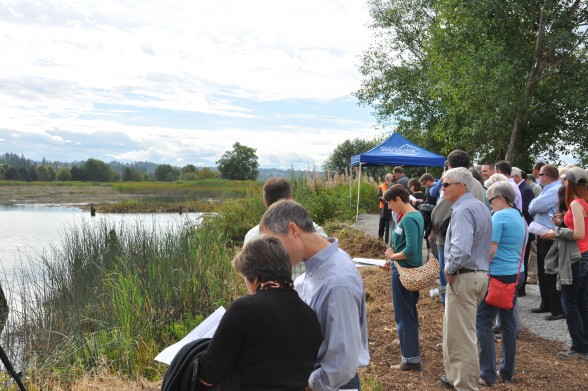
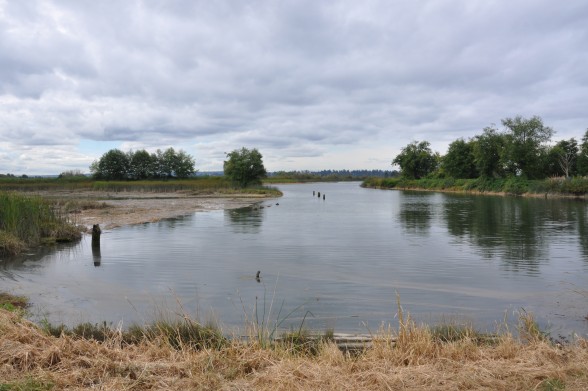
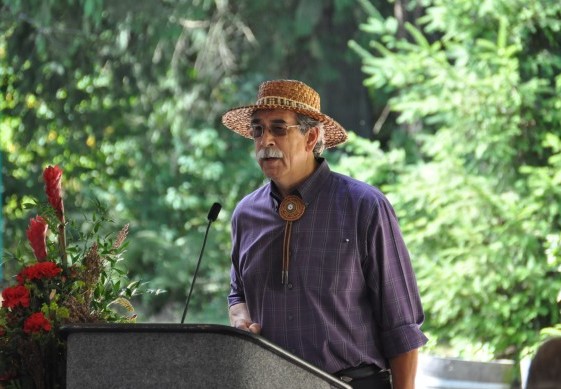


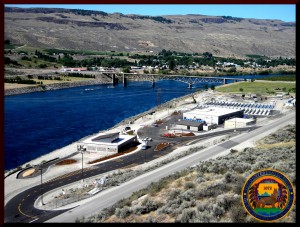 Colville Tribal Police are offering a $500 reward for information leading to conviction of the poachers.
Colville Tribal Police are offering a $500 reward for information leading to conviction of the poachers.

